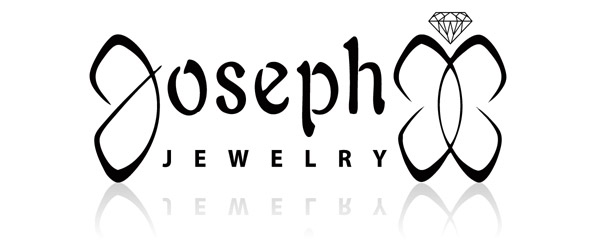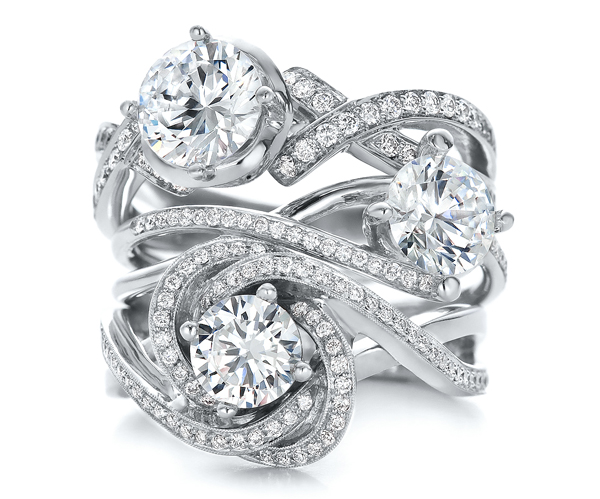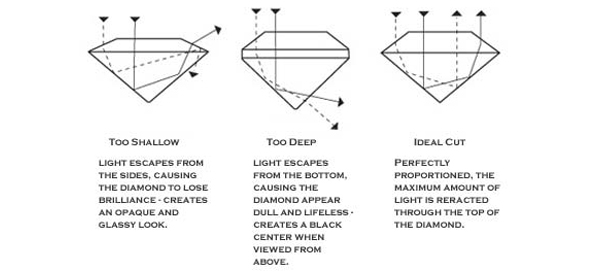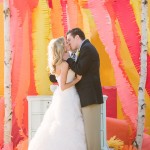
Undoubtedly the ring or wedding band is one of the most significant investments your engagement will bring and choosing the right diamond is just as important as choosing the perfect setting. Today, we’ll get a crash course in all things diamonds – from shape, cut, clarity, color and carat. Brought to us by Seattle’s own custom jewelry designers of Joseph Jewelry, here’s a little Diamonds 101 lesson for you!

From the team at Joseph Jewelry…
Shape
The shape of a diamond refers to the geometrical shape of the stone. Shape is much more about personal preference than it is a standard for judging the attributes of a diamond’s quality. Shape is all about style. Here are a few examples of popular shapes.
- Round – The most popular of all shapes, this cut has unparalleled brilliance. The way it refracts light makes a round diamond appear brighter than one of a different shape with similar clarity and color.
- Oval – The oval cut is most similar to the round in terms of brilliance. Its elongated shape is universally flattering as it makes fingers look longer and more slender.
- Square – Also referred to as “princess” cut, square diamonds are relatively new. They are popular in solitaire designs or as a main stone flanked by smaller side stones. Square diamonds are particularly efficient stones in that they preserve roughly 60 percent of the original rough. Due to the unique way square diamonds are cut and polished, any imperfections they contain can be easily masked by a skilled craftsman.
- Rectangle – Rectangles are very similar to square or “princess” cuts, but with a different length to width ratio. Like ovals, the elongated shape flatters the hand.
- Pear – Also referred as “drop cut” or “tear drop” diamonds, pear shapes are known for their elegance. Pear diamonds combine the brilliance of a round stone with a unique shape that makes fingers appear more tapered.
- Marquise – The story is that this classic shape dates back to King Louis XIV of France, who had it specially made to resemble the smile of his mistress, Marquise de Pompadour. This elongated boat cut is shaped to maximize carat weight, and can feature as many as 58 dazzling facets.
Cut
The cut of a diamond refers to the precision and quality of the actual cutting that occurred when the individual diamond was hewn from the original rough stone and transformed into a finished stone. The quality of the cut is important as the angles created during this process are what ultimately determine the brilliance a diamond will have. If you’ve ever seen an engagement ring that seems to wink and flash fire from across the room – that was a fabulously cut diamond! The round brilliant is the most popular cut because it is, as the name suggest, magnificently brilliant.
Clarity
A diamond’s clarity is determined by how many inclusions (a fancy word for imperfections) it has. Whether they can be spotted by the naked eye or only under a jeweler’s microscope, the more inclusions a diamond has, the lower its value. The Gemological Institute of America’s grading scale, shows a range of quality:
- Flawless (FL)
- Internally Flawless (IF)
- Very, Very Slightly Included (VVS)
- Very Slightly Included (VS)
- Slightly Included (SI)
- Included (I)
You should just keep in mind that higher grades are going to be more brilliant and durable while lower grades will be cloudy and perhaps structurally unsound.
Color
Grading for the color of diamonds starts with the letter D, which is the best, all the way down to letter Z, which is, shall we say, not so good. Color is actually a misleading term. What we’re looking for in a diamond is actually absence of color. Think of a diamond like a window – they both should ideally be crystal clear, which allows more light to pass through. A colorless diamond has the best sparkle and fire. Cloudy diamonds will grade low on the scale, and the lowest will actually look slightly off-white, yellow, or even slightly brown.
Carat
A carat is the unit used to measure a diamond’s weight. The bigger the carat, the larger the diamond, and usually the more expensive it is. Why usually? Size may matter, but it’s not the only thing that does. A large diamond with large or multiple inclusions and a low color grading may sell for less than a diamond half its weight that is blemish free and crystal clear. As carat weight increases, the price of a diamond increases exponentially. Therefore a 1.0 carat diamond is not simply double the price of a .5 carat diamond; assuming all the other characteristics are the same, it actually may be more than two or three times the price simply because larger diamonds are so much rarer than smaller ones.

Are you thinking about going custom? Go behind-the-scenes with Joseph Jewelry and learn how custom wedding and engagement rings are made!
This post is sponsored by Joseph Jewelry and chosen for Junebug for its value to our readers – after all, diamonds are a girl’s best friend!




















.jpg)




Thanks for sharing this info! Fabulous rings!!
The joseph jewelry is very attractive .